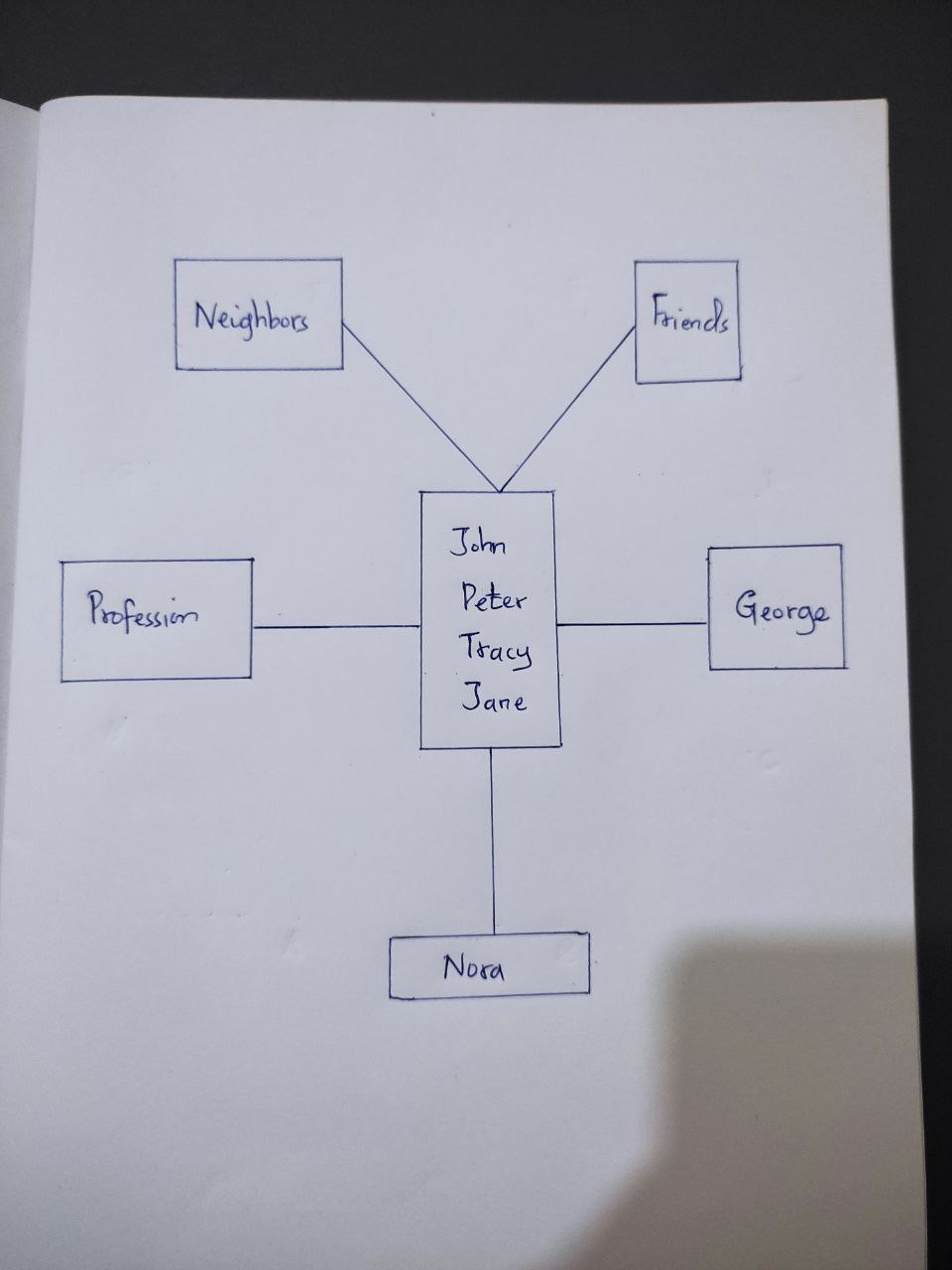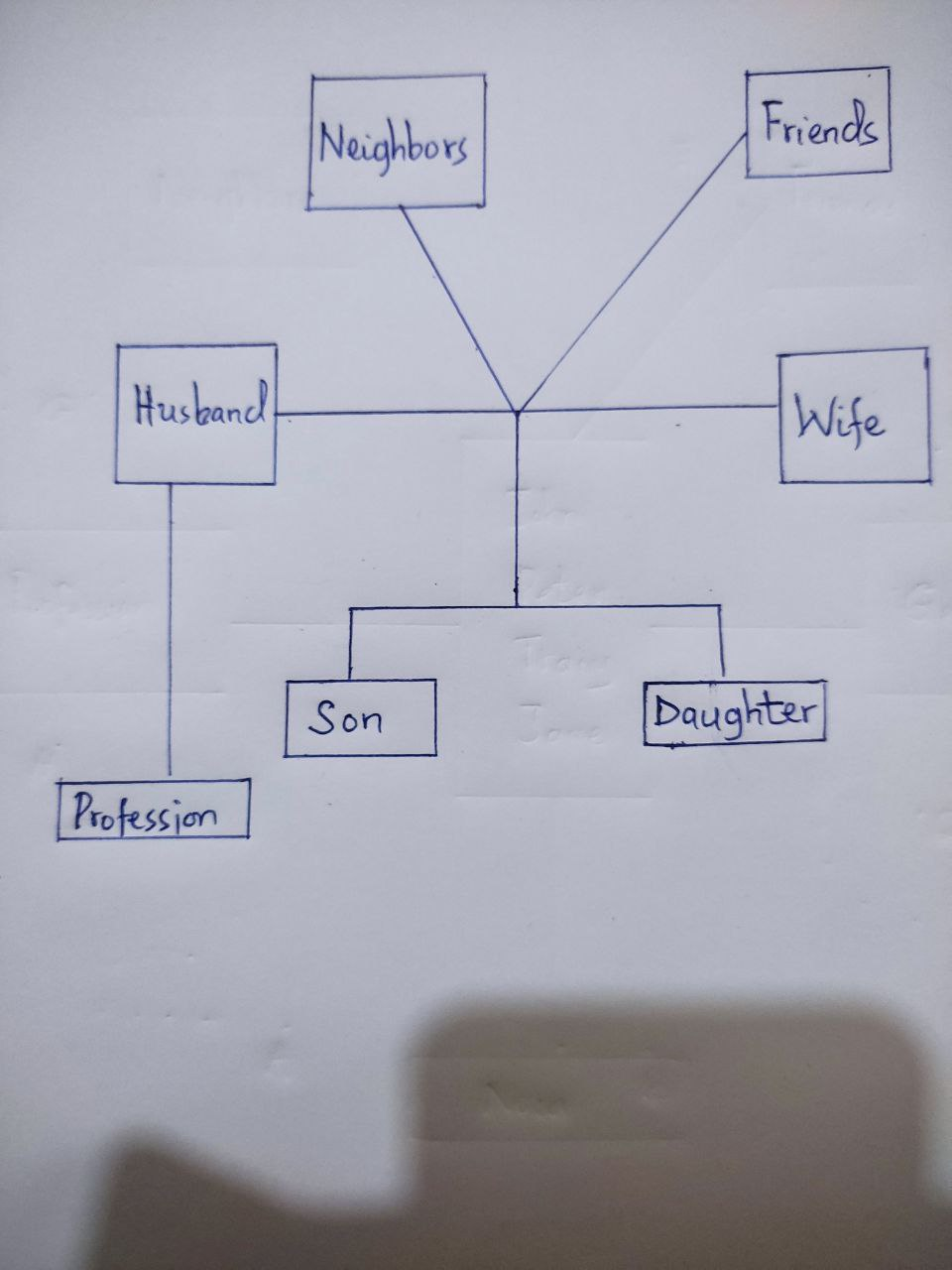The objective of this study is to question a household and then create a genogram and ecomap to highlight their interfamilial links along with their environmental support networks and stresses. In addition, the essay will evaluate the ecomap and genogram by examining a family’s connections, support programs, and concerns during an interview. The following section will explain the merits and limitations of household relationships.
Finally, the paper will explore nurse approaches and methods that foster positive interactions and alleviate family pressures. Genograms and ecomaps work together to identify recurring traits of productivity or family troubles, such as divorce, sibling conflict, suicide, and intoxication. Those who specialize in interacting with individuals or communities can use these methods to identify the family background and assist clients in comprehending the outlines of function in their past.


The family above consists of four people: John is the husband, Jane is the wife, and their children are Peter and Tracy. John is an attorney, and his profession is demanding because he must interact with customers from all walks of life. Consequently, John often spends very little time with his family. He decides to compensate for this by treating them on weekends. Jane is a housewife who devotes all of her time to her spouse and children. She left her teaching position a few years ago due to health concerns. Moreover, she spends most of her time preparing meals for her family. Tracy, the youngest child in her family, attends a middle school while George is her schoolmate and best buddy.
George and Tracy frequently study jointly. Tracy becomes anxious when she does not see George for a few days, as they have built a solid relationship. Peter is the oldest child and attends college to study engineering. Due to the course’s strict regimen, he is rarely available as most of his time is spent in the study room, is somewhat reticent, and rarely initiates the discussion. His anxiety levels have now reached a point where they hurt the other family members. He frequently encounters emotional outbursts. Neighbors and acquaintances occasionally make a trip to the family.
There are numerous beneficial practices and methods for managing stress. Possibly the most crucial fact is that almost all stress-related aspects in an individual’s life are modifiable. The discussion begins with a brief mention of the assistance of people’s partners, as one of the most effective treatments for distress is shared preservation: the cognitive and physiological assets others offer to assist an individual in overcoming hardship. Kaakinen et al. (2019) enumerated that persons who experience significant life stresses, such as the loss of a spouse or employment, recover more quickly if they have a large circle of relatives and friends for community support. Therefore, societal help has proven to be an effective remedy for anxiety among individuals.
Nurses utilize the following techniques to foster positive interaction and reduce family pressure. When participating in a therapeutic process founded on efficient exchange and caring actions, nurses aid families in achieving mental, physical, and spiritual balance (Snyder & Balderrama‐Durbin, 2020). This leads to a win scenario in which the nurse and the patient develop through embracing the moment. The efficiency of the family-centered treatment can be determined by the perceptions and beliefs of professionals (Colapinto, 2019). To effectively execute the theory, caregivers must cede some, but not all, responsibility to household members.
In conclusion, the options that families have about the conduct of their adolescents and the significance of parents and guardians vary between different families. Therefore, this can result in many variations in how household members relate to one another and communicate between themselves. The view that people have about what will constitute an effective dynamic family is founded on the values shared within the families, the impact that the family has on their youngsters, and the manner in which the kid was reared within society. The children’s attitudes and how they mature can be influenced by their cultural backgrounds.
References
Colapinto, J. (2019). Structural family therapy. Encyclopedia of couple and family therapy, 2820-2828. Web.
Kaakinen, J. R., Coehlo, D. P., Steele, R., & Robinson, M. (2018). Family health care nursing: Theory, practice, and research (6th ed.). F.A. Davis Company.
Snyder, D. K., & Balderrama‐Durbin, C. M. (2020). Current status and challenges in systemic family therapy with couples. The Handbook of Systemic Family Therapy, 3, 1-25. Web.